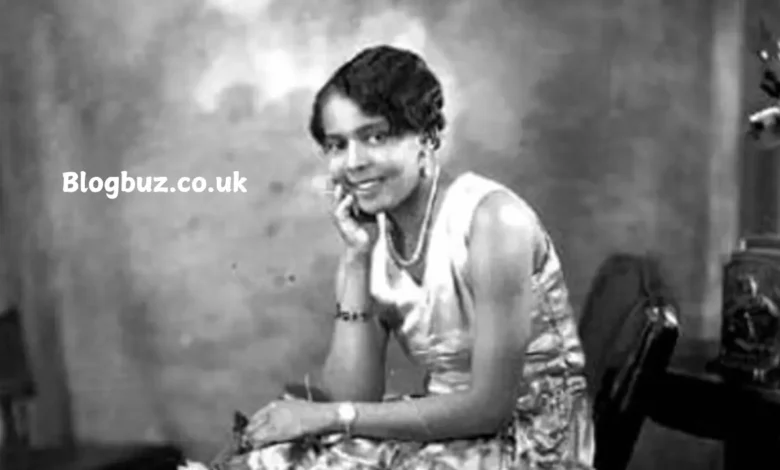Baby Esther: The Forgotten Black Child Star Who Inspired Betty Boop

In the world of early American entertainment, few figures are as simultaneously iconic and overlooked as Baby Esther. While most people are familiar with the bubbly cartoon character Betty Boop, far fewer know that her signature “boop-oop-a-doop” style was inspired by a talented African American child performer named Esther Lee Jones, better known by her stage name Baby Esther. Her story is one of talent, cultural appropriation, and historical erasure. In this article, we’ll uncover who Baby Esther was, how she became a sensation during the Harlem Renaissance, and how her signature style was imitated—without credit—by others who profited from her creativity.
Who Was Baby Esther?
Born Esther Lee Jones in Chicago around 1918 or 1919, Baby Esther began performing on the vaudeville circuit at a very young age. She was a child prodigy, captivating audiences with her unique blend of jazz, scat-singing, dancing, and animated facial expressions.
Her performances were marked by playful gibberish and nonsense syllables, such as “boop-boop-de-doop” or “doo-doo-de-da,” which became her signature style. This vocal gimmick made her a standout during an era dominated by adult performers. Despite her age, Baby Esther was already headlining in major clubs, such as The Cotton Club in Harlem—a legendary venue that featured performers like Duke Ellington and Cab Calloway.
She was often described in the press as the “Miniature Florence Mills,” a reference to another popular African American performer of the time. Her charisma, energy, and originality made her a beloved act among both Black and white audiences.
Baby Esther’s Rise to International Fame
By the late 1920s, Baby Esther had gained national fame in the United States and soon took her talents abroad. She toured Europe, performing in countries such as France, Sweden, and Russia, and wowed audiences with her style, charisma, and voice.
In Paris, she performed at the famous Moulin Rouge, where she was billed as a jazz prodigy. In Sweden, she faced racism and media backlash from certain newspapers—but the public overwhelmingly embraced her performances. Swedish authorities eventually defended her right to perform, praising her talent.
Esther’s international stardom was so significant that she was once considered one of the highest-paid child performers in the world —a remarkable achievement, given the racial barriers of the time.
The Birth of Betty Boop — And a Legal Battle
The story of Baby Esther takes a darker turn in the early 1930s, when Helen Kane, a white singer who rose to fame with the popular tune “I Want to Be Loved By You,” sued Fleischer Studios. She claimed that their cartoon character Betty Boop was a blatant imitation of her persona, particularly her trademark “boop-oop-a-doop” style.
However, during the 1934 court trial, it was revealed that Kane herself had copied the vocal stylings of Baby Esther after seeing her perform in a New York nightclub around 1928. A performance video of Baby Esther using the same baby-voiced scat style was presented as evidence in court. This footage showed Esther using variations of “boo-boo-boo” and “doo-doo-doo” long before Kane ever recorded her famous song.
As a result, the court ruled against Kane. The judge declared that she had not originated the style and that Fleischer Studios had not infringed upon her persona. Ironically, while Kane lost the lawsuit, neither she nor Baby Esther received proper credit for the creation of Betty Boop. Instead, Betty’s image and voice became forever associated with white performers and animators.
Cultural Appropriation and Historical Erasure
Baby Esther’s story is a classic example of cultural appropriation—when the contributions of Black artists are adopted by mainstream culture without credit or compensation. While Helen Kane’s career soared and the Betty Boop franchise made millions, Baby Esther faded into obscurity.
Despite being the true originator of the style, Esther never received royalties, public recognition, or a place in history books. In fact, for decades, her role in the creation of Betty Boop was unknown to the general public.
It wasn’t until the rise of online content and historical investigations by scholars and bloggers that Baby Esther’s name resurfaced. In recent years, videos, articles, and documentaries have sought to reclaim her legacy and educate people about her impact.
The Mystery of Baby Esther’s Later Life
Tragically, very little is known about Baby Esther’s later years. Some sources suggest that her career slowed down as she grew older. Without the novelty of her childlike persona, the entertainment industry—which often discarded Black talent after their prime—offered her fewer opportunities.
It is believed she eventually disappeared from public life. There are no confirmed reports of her date of death, though some speculate that she died relatively young, possibly in the 1930s or 1940s. No verified photos of Baby Esther exist today despite many fake images circulating online. Even reputable outlets like PBS have had to issue corrections after misidentifying other performers as her.
This lack of documentation is sadly common for many Black entertainers of the early 20th century. Their stories were not preserved, their contributions not recorded, and their legacies left to fade—unless someone chose to fight for their memory.
Why Baby Esther Matters Today
The story of Baby Esther is more than just an interesting historical footnote—it’s a powerful symbol of the ongoing quest for justice, recognition, and representation.
Her story highlights how:
- Black innovation often lays the foundation for American pop culture.
- Systemic racism can silence voices and erase contributions from history.
- Proper attribution and credit are essential in honoring artistic legacies.
In the modern age, Baby Esther’s life serves as a reminder that the real creators behind cultural phenomena may not always be the ones who profit from them. As society becomes more conscious of the need for inclusive historical narratives, Esther’s name is finally being restored to its rightful place in the timeline of American music and animation.
Baby Esther and Betty Boop: Side-by-Side Comparison
| Feature | Baby Esther | Helen Kane | Betty Boop |
|---|---|---|---|
| Real Name | Esther Lee Jones | Helen Schroeder | Fictional |
| First Appearance | Vaudeville clubs, ~1925 | “I Wanna Be Loved By You,” 1928 | First cartoon: 1930 |
| Signature Style | Baby-voiced scat, playful syllables | Copied baby-voice style from Esther | Animated version of Kane’s copied act |
| Legal Outcome | Video used to prove origin of vocal style | Lost lawsuit against Fleischer Studios | Became a pop culture icon |
| Recognition & Royalties | None | Fame but no legal win | Global brand success |
Modern Tributes and Recognition
Thanks to historians, digital archivists, and social justice advocates, Baby Esther is finally getting her due. While no formal museum exhibits or mainstream films exist in her name yet, conversations are growing louder online.
Independent documentaries, blog posts, and YouTube channels have all spotlighted her legacy, inspiring a new generation to question the origins of the characters and trends we take for granted.
There have been calls on social media for:
- A biopic about Baby Esther’s life
- Inclusion in Black History Month curricula
- Official recognition from animation studios
- Royalty claims for her surviving relatives (if any can be traced)
Final Thoughts
Baby Esther was more than just a performer. She was a trailblazer—a Black child entertainer who helped shape the sound and aesthetic of an era. Her vocal innovation laid the groundwork for one of the most famous cartoon characters in the world, yet her name was nearly lost to history.
You May Also Read: Alice Marrow: The Life, Legacy, and Influence Behind the Iconic Ice-T




